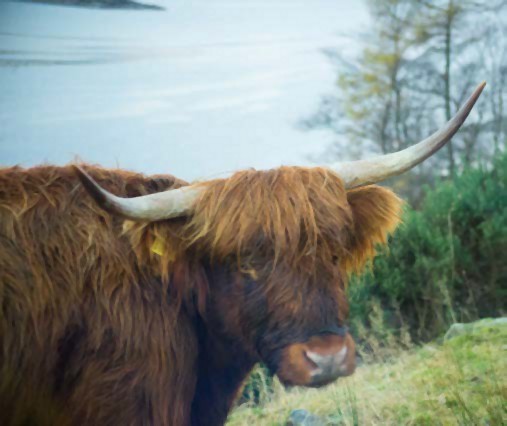PATH OF A PRINCE
Pete Scullion continues his tour of the north’s coffn roads. Ancient byways that were the final journey for the dead and which conveniently make great trails for the living.
WORDS & PHOTOGRAPHY PETE SCULLION
ADVENTURE
For countless thousands every year, the A87 that runs across north-west Scotland allows easy access to the unspoiled spectacle of the Western Highlands. They gaze at the many, many Munros from the comfort of the driving seat, instead of looking at the road, much to the dismay of the locals. What many miss is the history, and a tumultuous history it is at that, of Scotland and its Highlands.
Centuries before the A82 met the A87 west of Invermoriston, taking traffic through towards Skye, the military road built by William Caulfield, the successor to General Wade, wound its way along the northern shore of Loch Garry, before swinging north from Tomdoun and into Glen Shiel.

The locals seem friendly enough…
It would take the Jacobite Risings in the 1700s to really spur the building of military roads and mapping of this vast wilderness, a place where droving roads were the best means of moving about the mountains – mountains that the Jacobites knew well and the English did not. It would be in Glen Shiel that the English would fight the Jacobites, augmented by Spanish soldiers, making it one of the last foreign engagements on British soil. The infamous Rob Roy MacGregor commanded the Jacobites here, and the coffn road out of Kinlochhourn features on a map he made of the area from 1755.
Take away the modern roads, take away the military roads, return the lochs to their pre-reservoir status, remove the English landlords and put back the natives forced out by the Highland clearances that followed the Rebellion and you have the context in which our route exists.
The coffn road out of Glen Quoich starts at the now monstrous body of water that is Loch Quoich, dammed in 1955, and heads north towards the now derelict hunting lodge at Alltbeithe, before swinging west to the corrie at the western end of the glen. This coffn road is unique in that it shared its route with the drove roads that lead to Invergarry and Fort Augustus to the east, and Kinlochhourn and Arnisdale to the south and west. The vast majority of these ways of the dead would be used for a single purpose, and across ground that would be unsuitable for livestock or carts.